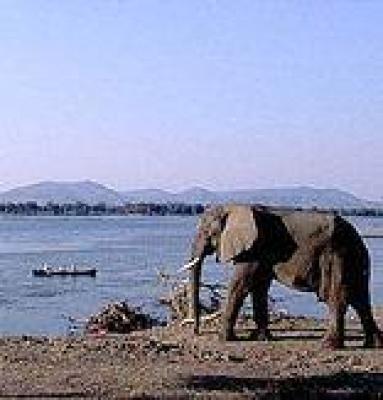A special paradise for game viewing is Mana Pools National Park. As the name implies it is a place where there are a number of large pools. The magic of this national park stems from the pervading sense of the wild and also in the park's relative remoteness.
The word 'Mana' means four, in reference to the four pools around the park headquarters: Main, Chine, Long and Chisambik. They are actually on the mainland, in an area of deep and good quality alluvial soil, along a portion of the southern bank of the Zambezi. They owe their existence to the scouring action of the flooded river that created a number of elongated troughs which retained water long after the flood had subsided.
The area has a parklike appearance. Massive acacia albida trees tower over what appears to he, from a distance at least, a carefully manicured lawn. Further away a border of mopane trees and combretum scrub begins and there is visible a line, like some extraordinary tide-mark, a browse-line that exactly demarcates the height to which browsing animals of the area can reach.
Accommodation is provided in luxury bush camps and lodges on the Zambezi like those at Chikwenya and Ruckomechi. Game drives and specially the bush walks offer the opportunity to stand near buffalo or elephant or watch crocodile and hippo from close quarters with nothing but your fear to protect you.
It is not only by Land Rover or on foot that the excitement of the area can he enjoyed. Canoe safari companies organise guided canoe trails down the Zambezi from Kariba in the west, to Kanyemha in the east or any portion in between. Each trip is accompanied by well-trained, competent and experienced guides and is an incredible way to experience the river at first hand.
Every kind of wild animal and bird is viewed at close hand as the canoe glides silently past. One can drift within metres of grazing buffalo, slide by sleeping crocodiles, watch wading elephants and enjoy a sense of openness, freedom and a feeling of being totally at one with the environment which is hard to match elsewhere.
During September and October this area has the highest concentration of wildlife in Zimbabwe.


